The mesmerizing sparkle of diamonds is adored by all. Whether they adorn rings or any other jewelry piece, diamonds always exude a breathtaking beauty.
Occasionally, diamonds may exhibit dark spots, leaving you wondering, “Why does my diamond look dark?” Rest assured, we have the answers you seek.
A diamond’s appearance can be influenced by its surroundings, causing it to appear dark at times. But how exactly does the environment impact a diamond’s visual allure? And what factors have the most significant influence?
This article comprehensively explores these questions, providing you with a thorough understanding. Make sure to read until the end to uncover all the insights.
DESIGN YOUR OWN ENGAGEMENT RING: START WITH A SETTING OR START WITH A DIAMOND. IT’S REALLY UP TO YOU!

How Does The Light Affect Diamond’s Appearance
If you’ve ever wondered why your diamond looks different under various lighting conditions, such as daylight versus office light, the answer lies in how the diamond’s cut interacts with the light and environment.
In essence, the location and lighting conditions where you examine your diamond can have a significant impact on its appearance.
Visualize a diamond as a collection of mirrors that reflect its surroundings. This analogy can aid in understanding how the diamond’s appearance can be influenced by its environment.
When you observe your diamond, you are essentially witnessing a reflection of the surrounding environment and even your own reflection.
Sometimes, the dark areas or patterns you perceive within the diamond are simply reflections of your face or the camera if you’re looking at a photograph.
You can conduct a simple test to experience this phenomenon yourself:
Hold your diamond at arm’s length and observe its brightness and the patterns of light and dark. Now, gradually bring the diamond closer to your eyes. As it gets nearer, the dark patterns within the diamond become more pronounced and prominent.
This experiment demonstrates that the series of mirrors within the diamond not only reflect the environment but also your own presence. The proximity at which you hold the diamond and the specific environment you are in can influence the patterns you observe.
Among the Gemological Institute of America’s (GIA) 4C’s, which include cut, color, clarity, and carat weight, the cut of a diamond is often the least understood by shoppers. This is because cut grading involves numerous factors.
To help you gain a better understanding of a diamond’s appearance, we will delve into the intricacies of diamond cut in more detail. Be sure to continue reading for further insights.
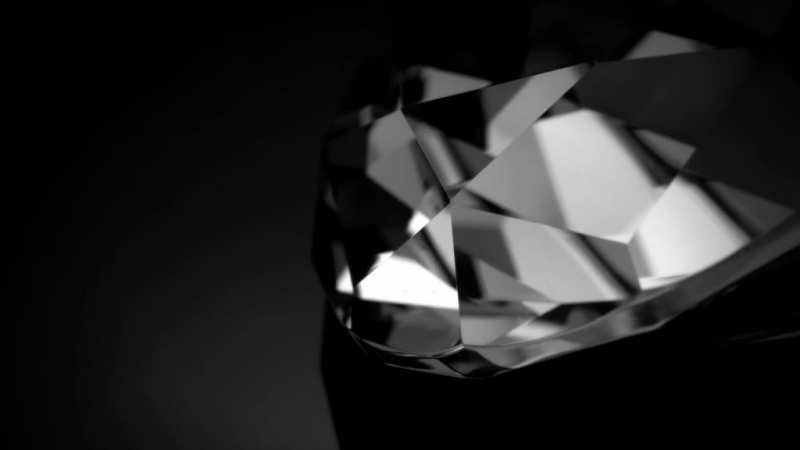
A Deeper Dive In The Diamond’s Cut
The purpose of cutting a diamond is to enhance its brilliance, fire, sparkle, and overall visual appeal. The diamond’s cut is essentially a measurement of how well it performs when light interacts with the stone.
In its initial stage, before cutting and polishing, a diamond exists in a rough form. Rough diamonds lack facets and therefore have minimal sparkle. The cutting and polishing process is what unleashes the dazzling sparkle that diamonds are known for.
The sparkle and brilliance of a diamond are achieved through its light performance. When light strikes the gemstone, it enters the diamond, reflects internally, bounces around, and eventually returns to the viewer’s eyes.
This mesmerizing sparkle is what captivates our attention.
The cut of a diamond directly influences its light performance. The size, shape, angles, and placement of facets all play a crucial role in determining the diamond’s sparkle. By manipulating these factors, the cut of a diamond can be optimized to maximize its brilliance and overall visual impact.
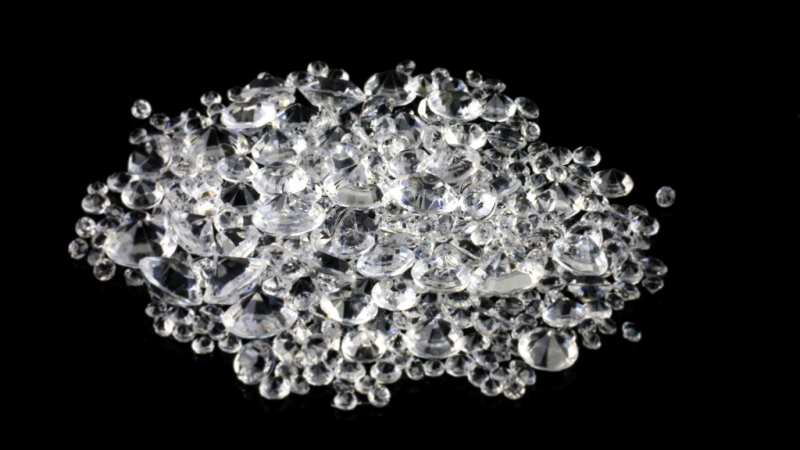
Cut Scale: The Factors
After a diamond has been shaped and polished, it undergoes a grading process to assess its cut. The Gemological Institute of America (GIA) measures the sizes and angles of the diamond’s facets, including the culet, crown, pavilion, girdle, depth, and table, to determine the cut grade. Symmetry and polishing also factor into the grade.
All these elements work together to determine the overall cut grade of the diamond.
It’s important to note that each diamond size and shape has an ideal cut proportion. If you’re seeking an ideally-cut diamond, it’s advisable to consult with local diamond experts who can guide you toward available options.
The Cut Scale
Poor & Fair: Diamonds in this category have significant light leakage due to being cut too deep or too shallow. They lack brilliance and sparkle, making them visually unappealing. Approximately 35% of gem-quality diamonds fall into this category. It is recommended to avoid these diamonds if you desire a sparkling gem.
Good: These diamonds are well-cut and exhibit high levels of sparkle and brilliance, although they may still have some light leakage. The measurements of good cut diamonds can vary significantly from perfectly cut stones of the same shape. Diamond cutters may intentionally cut stones to good proportions to achieve a specific look. This cut grade encompasses the top 25% of all diamonds. Good cut diamonds offer a good balance between value and size, but expert evaluation is recommended before purchase.
Very Good: Very well-cut diamonds capture almost all of the diamond’s potential, displaying minimal light leakage. They are highly brilliant and can enhance other factors such as clarity, color, and carat weight. The top 15% of gem-quality diamonds fall into this grade. Very good cut stones are a great option for maximizing the value of other diamond attributes.
Excellent: The highest cut grade, “Excellent,” represents the top gem-quality diamonds worldwide. These diamonds are masterfully cut to unleash maximum brilliance and minimize light leakage. They are highly coveted and represent the top 3% of all gem-quality diamonds. Regardless of the diamond’s shape or size, an excellent cut stone is always an excellent choice.
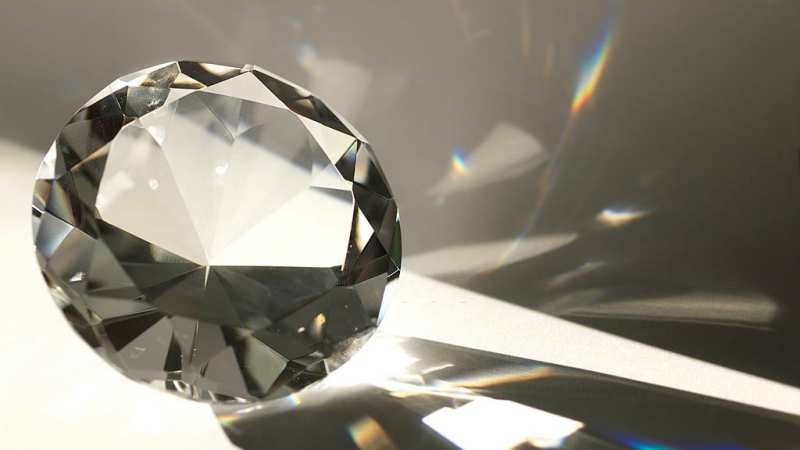
Light Performance
As previously mentioned, the cut of a diamond determines its sparkle and brilliance, which are the result of its light performance. Light performance encompasses reflection, refraction, and dispersion.
Reflection occurs when light reflects on the diamond’s surface instead of bouncing within the stone. When a diamond is tilted at different angles, approximately 17% of light is reflected. It is crucial for the reflection to be balanced, as overly large facets can cause reflections to weaken or intensify, resulting in a dark and dull appearance.
Refraction refers to the way light enters, bounces, and bends within the diamond, eventually leaving through the top of the gem. Diamonds have a high refractive index of 2.41, which contributes to their sparkling characteristics. With an ideal cut, refraction becomes even more pronounced.
Dispersion is the phenomenon that produces the colors of the rainbow within a diamond. As light bounces around, bends, and reaches the viewer’s eyes, dispersion, measured at 0.44, creates the diamond’s fire. The visibility of these different colors adds to the unique beauty of diamonds. Unlike other gemstones, diamonds exhibit a high level of dispersion.
Due to their exceptional light performance and unique characteristics, diamonds are highly regarded and popular choices for engagement rings and various types of jewelry.
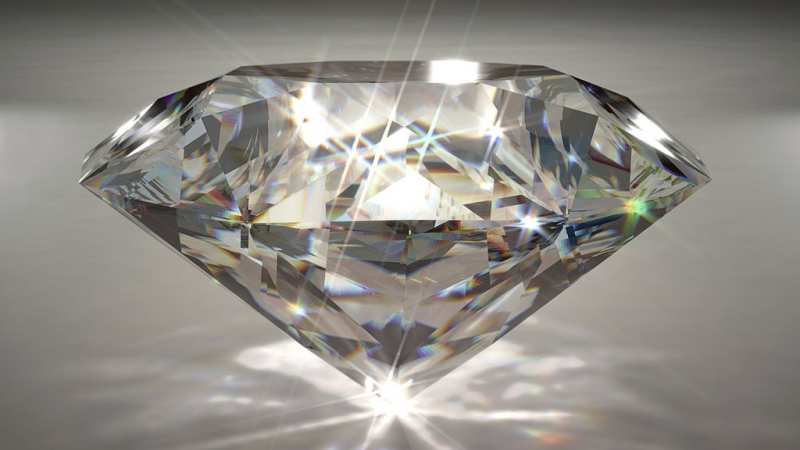
Finish: Facets, Symmetry, And Polish
The cut grade of a diamond is influenced by various factors, including faceting, symmetry, and polish. Diamonds are typically cut in two main styles: brilliant cuts and step cuts.
Brilliant cuts, such as the round brilliant and Princess cuts, are known for their maximum sparkle. They feature numerous triangular or kite-shaped facets that enhance the diamond’s brilliance, fire, and scintillation. These cuts have a high level of sparkle and are commonly chosen for their radiant appearance.
On the other hand, step cuts like the Emerald and Asscher cuts are renowned for their unique fire and sparkle. They have facets with a staircase-like appearance, creating an elegant and sophisticated look. While step cuts have fewer facets compared to brilliant cuts, they maximize the scintillation of the stone and offer a distinctive beauty. When selecting a cut, it is important to consider the type of sparkle you prefer.
Symmetry and polish are crucial aspects of the manufacturing process and also impact the cut grade. Symmetry refers to the pattern and evenness of the facets’ shape, size, and positioning. If the facets are improperly aligned, it can affect the diamond’s light performance and, consequently, its cut grade. For example, an off-center table facet can diminish the diamond’s sparkle.
Polish refers to the smoothness and cleanliness of the facet surfaces. If there are small polish lines or imperfections remaining after the polishing process, it can impact the diamond’s light performance and, therefore, its cut quality.
Considering both the symmetry and polish is essential in ensuring that a diamond exhibits optimal light performance and achieves a high-quality cut.
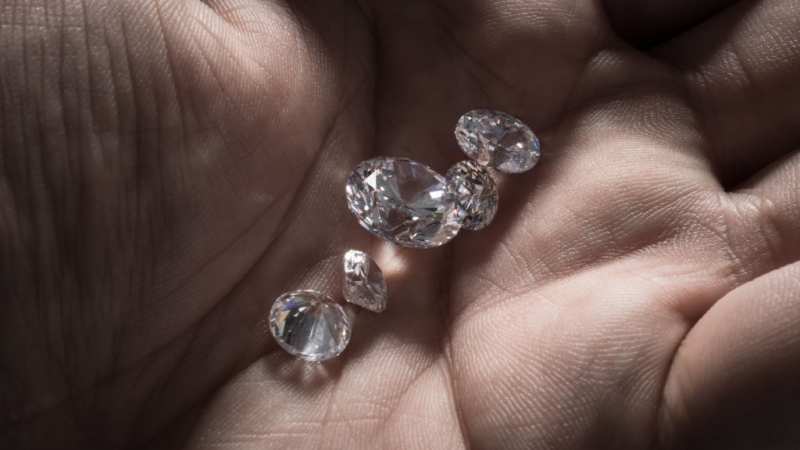
Pricing Effect
The cut grade of a diamond is one of the factors that significantly affects its pricing. In recent times, there has been an increase in the availability of diamonds with an Excellent cut grade. This is due to advancements in diamond production technology, which allows for more precise cutting practices and improved proportions.
For round brilliant cut diamonds, an Excellent cut grade can command a premium of up to 10% compared to the next cut grade, which is Very Good. The same applies when comparing Very Good to Good cut grades.
It’s important to note that fancy-shaped diamonds, such as pear, marquise, or oval cuts, do not receive specific cut grades from the Gemological Institute of America (GIA). This is because fancy-shaped diamonds come in a range of different lengths and widths, while still maximizing sparkle and brilliance in their unique shapes.
When considering fancy-shaped diamonds, it’s crucial to work closely with a trusted jeweler or diamond expert who can guide you in selecting a stone that offers the desired level of sparkle and brilliance within your preferred shape.
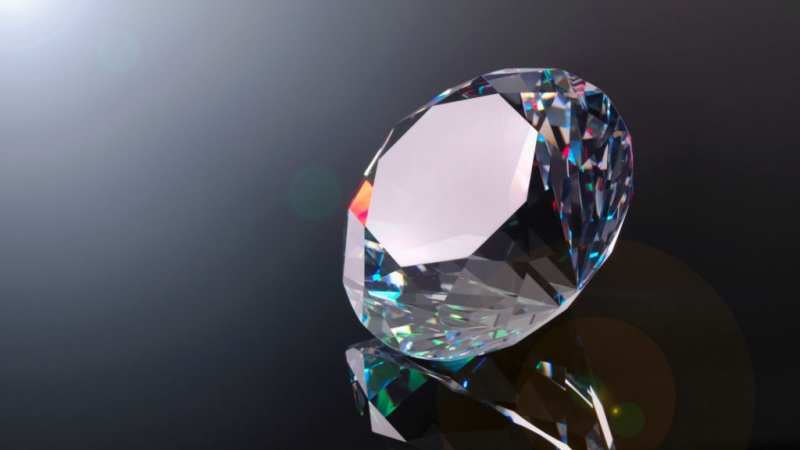
Selecting Cut Grade
The cut grade is often considered the most important aspect among the 4C’s when selecting a diamond. It plays a crucial role in determining how well the diamond reflects light without any noticeable leakage.
Diamonds with an “Excellent” cut grade offer the highest level of light performance, but they also come with a higher price tag. On the other hand, “Very Good” cut diamonds provide excellent value as the differences in sparkle compared to Excellent cuts are subtle, yet discernible when viewed side by side.
We always recommend prioritizing the cut grade when shopping for diamonds as it significantly impacts the stone’s overall beauty and brilliance.
Fancy-shaped diamonds, such as pear, marquise, or oval cuts, offer more flexibility in terms of cut grade. Their beauty is subjective and can vary depending on personal preferences. However, it’s important to note that finding fancy-shaped diamonds with an Excellent cut grade can be relatively rare.
Ultimately, the choice of cut grade is a personal decision. It’s essential to consider other factors and attributes of the diamond that matter most to you. Take into account your preferences, budget, and desired visual appearance to make the best decision when selecting a diamond.
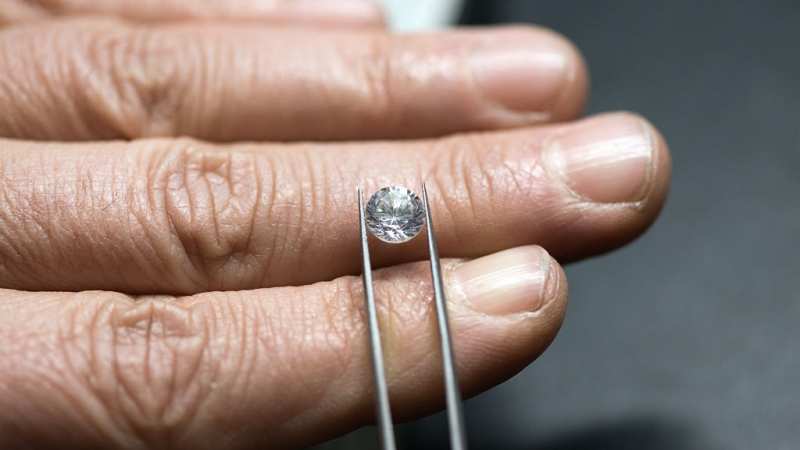
Spread: The Diamond’s True Size
The concept of a diamond’s spread or measurements is relatively easy for consumers to understand: Diamonds with larger spreads will appear bigger.
Interestingly, most cut grading systems do not take the spread into account, even though it is the simplest cut-related metric to evaluate.
While a larger-looking diamond does not necessarily mean it will be more sparkly, it tends to be more desirable and sought after by consumers. Two diamonds can have the same carat weight, but the one with greater measurements will have a larger spread.
It’s important to note that the spread is not directly related to the diamond’s carat weight. Instead, it is the total depth percentage that determines the spread of a gem.
As a general recommendation, we suggest considering diamonds in the “Excellent” cut grade range with maximum measurements to achieve the best balance between size and sparkle.
It’s worth mentioning that opting for such diamonds may come with a higher price tag. However, the investment is often worthwhile as you’ll be getting the best combination of size and brilliance.
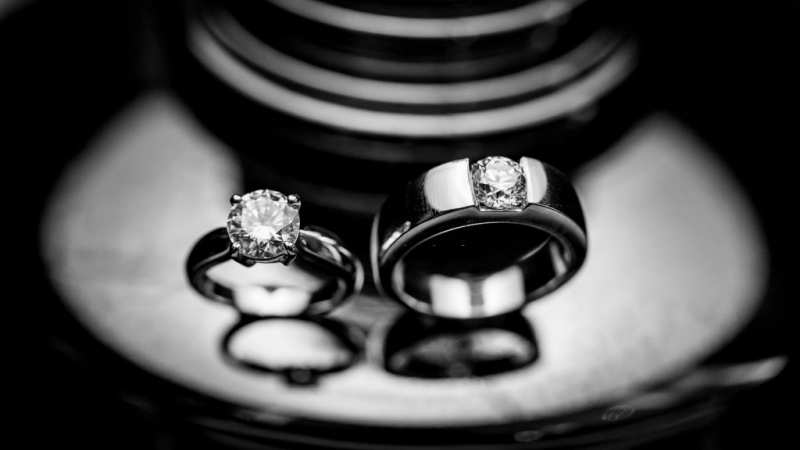
Conclusion
“Why does my diamond look dark?” It may seem like a straightforward question, but the answer is more complex and involves various aspects of your diamond’s cut and the viewing environment.
Diamonds have a natural tendency to reflect their surroundings, including the viewer. Depending on the lighting conditions and environment you’re in, your diamond may appear to have dark areas. This phenomenon is primarily influenced by the diamond’s cut.
The cut of a diamond plays a crucial role in how effectively it reflects and refracts light. A well-cut diamond will exhibit more sparkle and brilliance, enhancing its overall appearance.
Among the four C’s of diamonds, the cut is considered the most important factor. Therefore, if you’re seeking optimal sparkle and brilliance, we recommend prioritizing a higher cut grade for your diamond.


